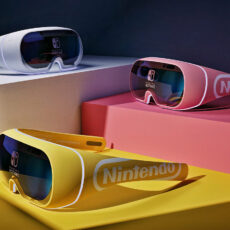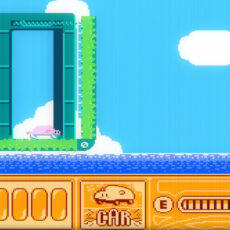
Nintendo’s Switch 2 promised a leap into high dynamic range (HDR) gaming, a first for the company’s consoles. Yet, many players have found their games looking oddly washed out or overly bright when docked to a TV. YouTube’s display guru Vincent Teoh of HDTVTest has dissected this issue in a detailed video.
When you plug your Switch 2 into a TV, the HDR feature should pump up colors and contrast. Instead, games like Mario Kart World or Zelda: Breath of the Wild can seem flat, with muted tones or overly bright spots. Teoh nails the culprit: Nintendo’s HDR tuning system is clunky, making it tough to nail the perfect settings. The “Adjust HDR” menu, meant to tweak peak brightness and paper-white levels, drowns users in too many fine adjustments, often leaving visuals off-kilter.
- 4k Ultra HD (2160p resolution): Enjoy breathtaking HDR10 4K movies and TV shows at 4 times the resolution of Full HD, and upscale your current content...
- High Dynamic Range: Provides a wide range of color details and sharper contrast, from the brightest whites to the deepest blacks.
- All-in-one: Get right to your good stuff. With Fire TV, you can enjoy a world of entertainment from apps like Prime Video, Netflix, Disney+, Hulu, and...
A big snag is how the Switch 2 slaps HDR on everything. By default, it forces HDR onto all content, even games not built for it. This can mess up non-HDR titles, spitting out overexposed or washed-out looks. Teoh offers a simple fix: dive into the Switch 2’s settings and switch HDR output to “Compatible Software Only.” This limits HDR to games like Cyberpunk 2077, while older ones like Breath of the Wild stick to SDR, keeping their original vibe.
Another key adjustment involves the TV. Many newer screens have an HDR Gaming Interest Group (HGiG) option, letting the TV handle HDR on its own, sidestepping clashes with the Switch 2’s output. Turning on HGiG can dodge double-processing, where both the console and TV wrestle with HDR, often flattening the picture. If your TV has HGiG, flip it on in the display menu.
For those after spot-on accuracy, Teoh digs into calibration. During the Switch 2’s HDR setup, hitting the Y button on the last test image brings up a slider. This tunes the paper-white level, ideally matching HDR10’s 203 nits. Nintendo’s default often overshoots, cranking brightness too high and fading colors. Teoh suggests sliding it down toward 203 nits, though it varies by TV. It takes patience, with the console offering hundreds of tiny steps, but the payoff is worth it.
The Switch 2’s screen hardware adds to the hassle. Its edge-lit LCD, peaking at about 450 nits, just scrapes by for HDR10 certification. Paired with a 0.5-nit black level, it can’t hit the deep blacks or bright pops of an OLED. Docked mode lifts this by tapping your TV’s better HDR, but handheld mode lags behind. Teoh points out switching to dark theme mode can help handheld play by easing the Automatic Brightness Limiter’s (ABL) effect, keeping brightness and contrast steadier.
[Source]










